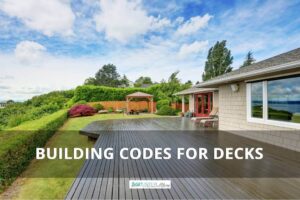
Building Codes for Decks – Requirements & Specifications
Building a deck is a great way to transform your outdoor space into a more appealing and functional area for relaxation and entertainment. To ensure the deck’s safety and durability,
This is Not a Legal Survey
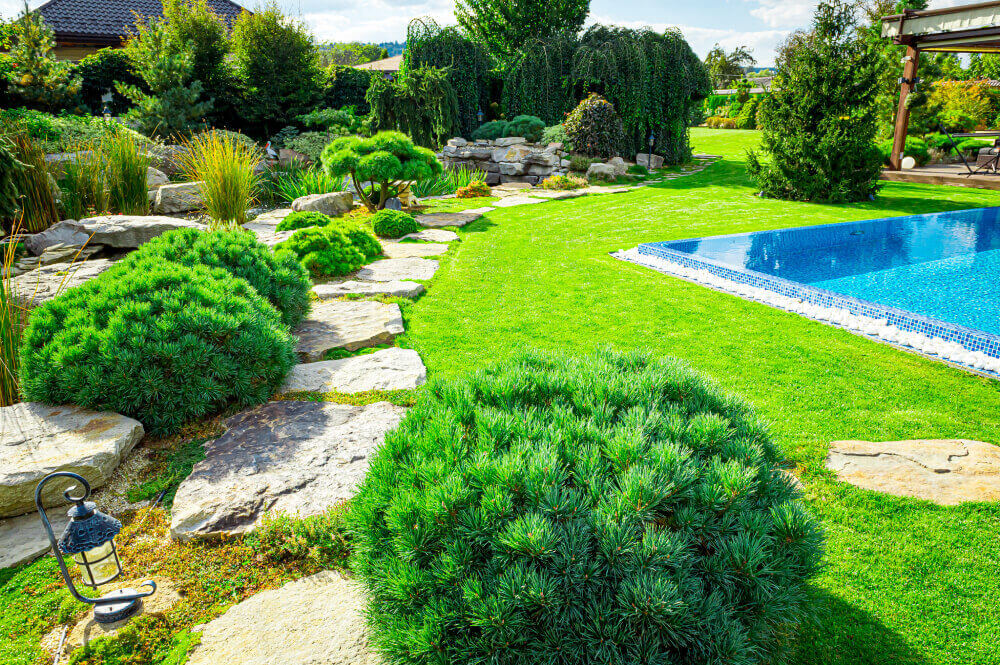

Contributing Writer | Architecture & Design Writer
Whether you want to make some small changes to your yard or create a lavish garden, it’s important to have a landscape design plan. We’ll explain everything you need to know about the process, why it’s important to have a site plan, and how to create the backyard of your dreams.
We’ll explain the importance of landscape design drawings, whether you want to create a simple landscape plan or an intricate design. Then, we’ll offer you different landscape layouts and examples so that you can create a perfect idea for your garden and have an easy and smooth landscape site planning process.
Table of Contents
ToggleLandscape design is the creation and/or modification of landscape features of a garden or urban area. Landscape design consists of the analysis, site planning and composing of outdoor living spaces.
A well-thought landscape design will increase usable square footage of your house, add value to your home and enhance the overall curb appeal of your property. If you are interested in the cost of landscaping, read our article on prices and maintenance cost of landscape.
Landscaping is also a great activity enjoyed by more than 20% of Americans (Source: National Gardening Association).
Now let’s see how you can plan a landscape design, create it and enjoy all the benefits of it.
Site planning architecture in a landscape design is a process that involves several steps. Rushing your design and skipping these steps can lead to poor end result. Those steps are:
This may sound overwhelming, but it’s really not. People of all ages participate in various gardening activities, as you can see in the pie chart below (Source: National Gardening Survey).
It is also interesting that there is almost no gender difference in gardening (Source: National Gardening Survey).
There is no need for you not to make the most of your yard and create an excellent landscape design. So let’s start.
Landscape design drawings are plans that are necessary in creating a beautiful yard. Those plans are there to ensure that site layout, size and scale are well thought out before you start with construction and installation of your yard elements.
Best drawings are those that show you existing and proposed structures on your plot. Now let’s explain different types of landscaping plans.
Different types of architectural drawings and plans are used in creating a good landscape design. Here we list and explain 7 different types and examples of landscaping plans which are crucial in creating a well-rounded design.
Depending on the size of your yard and complexity of your project, maybe there will be no need for all of these landscape design drawings. But we highly recommend using site plans in your design process in order to avoid errors and create a perfect garden for yourself.
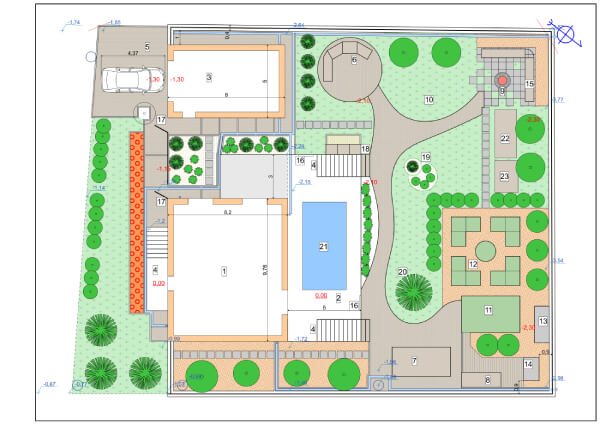
Having a detailed site plan (commercial or residential) is crucial in creating a successful landscaping design. It will show you your plot with existing property and features, as well as its boundaries. Knowing all of this information is important in planning and executing your landscaping design.
Before you start any major changes to your garden, check whether you need a building permit or a demolition permit to carry it out. Once you are done with the paperwork, it is time to start with site analysis.
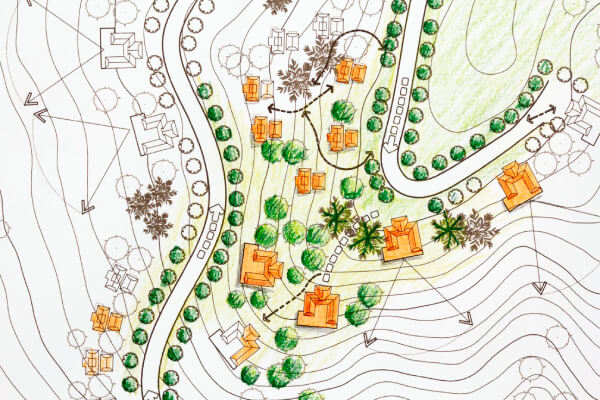
Now that you have your site plan, you can start working on a site analysis. The main point of this is to understand environmental factors that will affect your final design. Those are wind direction, sun angles, and the types of view that you are going to have at the end.
This will also help you determine what type of plants to use and where to put them. After that it is time to create a bubble diagram.
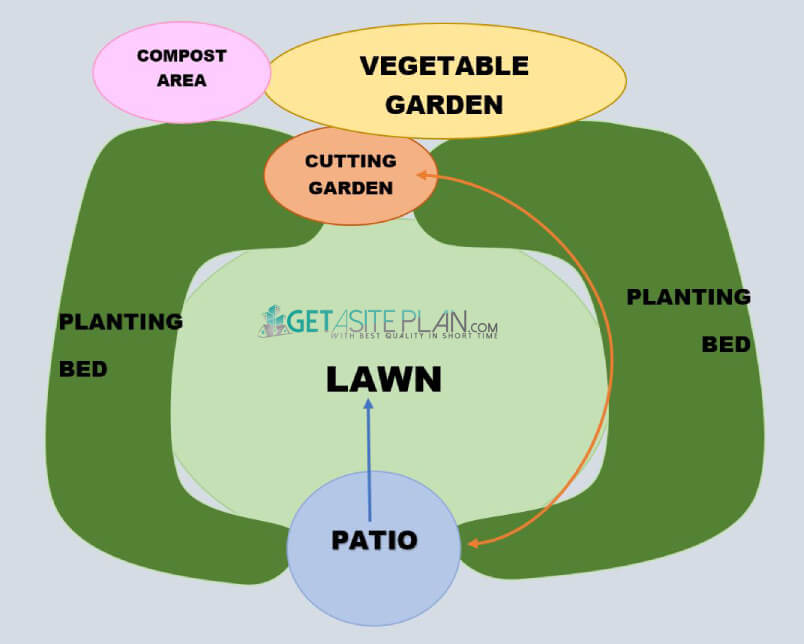
After you decide which elements you want to incorporate in your landscaping design, it is time to create a bubble diagram. As you can see in the picture above it is a very simple drawing where you can see the organization and correlation between different elements of your garden.
Once you determine the placement and location of all the elements, it is time for a landscape plan. You can choose a simple one, or if you want to see how everything will look when finished, you can use a 3D plan.
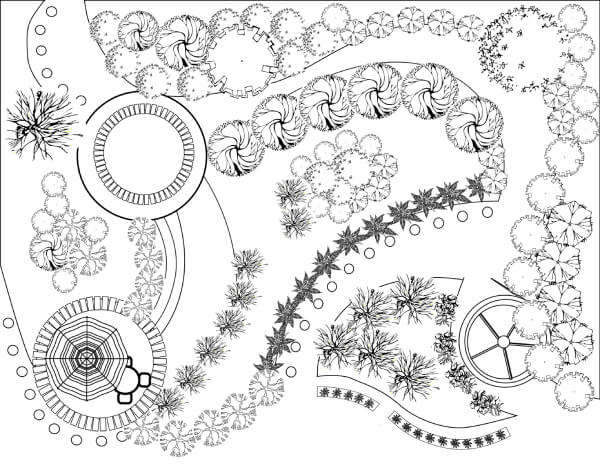
A simple landscape plan will show you proposed outlines of your design. As you can see there is usually no colors or textures, this is just so you can see the dynamics between proposed objects, structures, plants and trees.
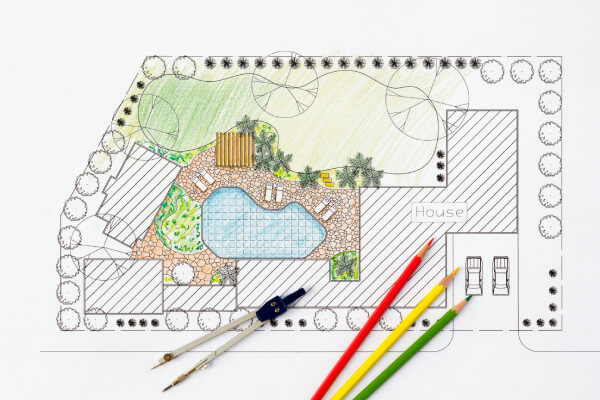
Concept plan is one of the best ways to visualize your proposed design. This type of landscape design drawing is a site plan of your plot, but with all the changes that you are planning to make. At this stage you will see all your ideas come to life and you will be able to fully picture the layout and style of your new garden.
If you want to go a step further, you can use 3D landscape renderings.
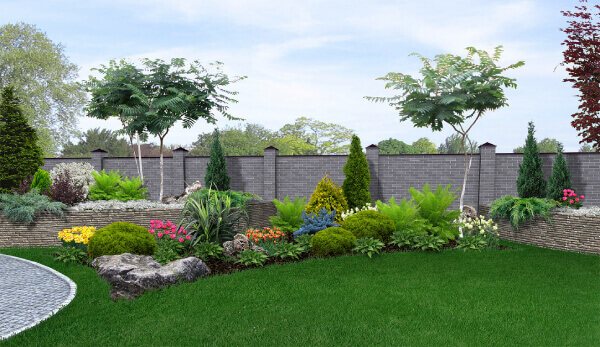
3D landscape renderings are computer generated images that will show you your design in a 3-dimensional format. These types of architectural drawing will show you the depth and textures of your design. Some have atmosphere settings where you can see your design during different times of day, so you can see lighting and shading.
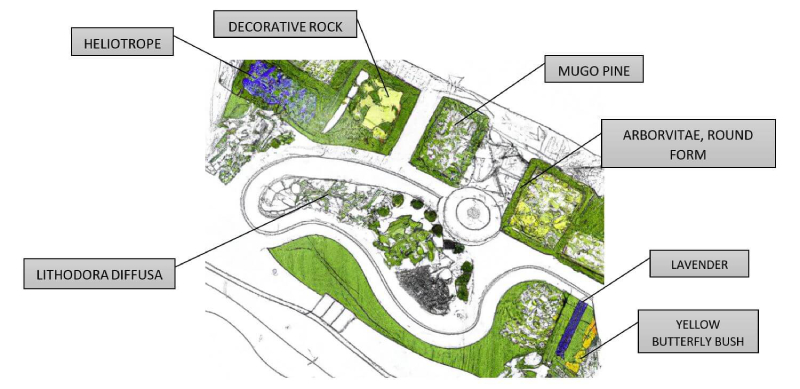
As you can see in the picture above, the planting plan is a labeled architectural drawing. On it you will be able to see shapes, sizes, quantities and types of plants that are going to be used in your landscaping design.
Each plant has to be carefully selected in order to create an ideal design. You should think of colors and how they correlate to each other. Also about the height of the plants, you want them to have different heights in order to create some dynamics. But you don’t want too much height difference, because some of the smaller plants can get lost in it.
The other thing that you should think of is how much water do plants that are put next to each other require. You don’t want to pair plants that have different requirements, because it will be difficult to maintain them.
You can see this entire process in the video below.
Now that you know everything about the process of creating a landscape design, let’s see the different types of it.
There are many different types of landscaping layout concepts. You can choose between them based on your aesthetics, location, weather and space that you have available. You can also mix different designs and create something completely new. But, with that said, these are the seven main types of landscape concept:
Let’s find out more about them and give you some tips for creating them.
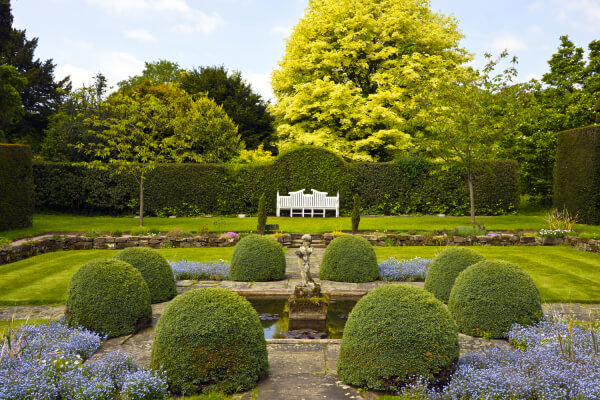
English garden is an informal landscape style. The idea developed in the 18th century as a revolt against structured, architectural, French gardens. The main goal was to blend natural elements with human design. You can see it in the picture above.
If you want to design a garden that is inspired by the English garden style, these are 3 steps that you should follow:
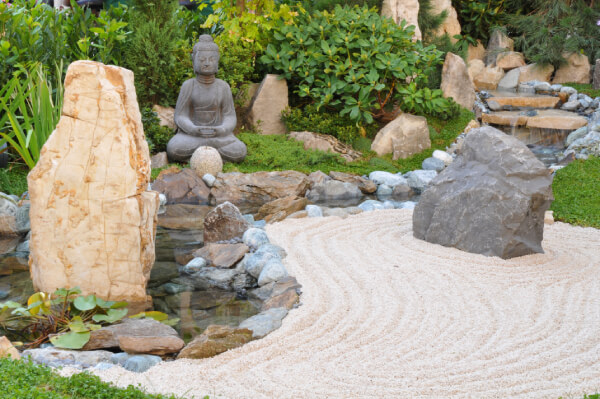
The main purpose of Japanese landscape design is to create a peaceful environment. The main elements are plants, water and rocks.
If you have enough space in your backyard, you will be able to create stunning designs, here are 3 ideas for your Japanese garden:
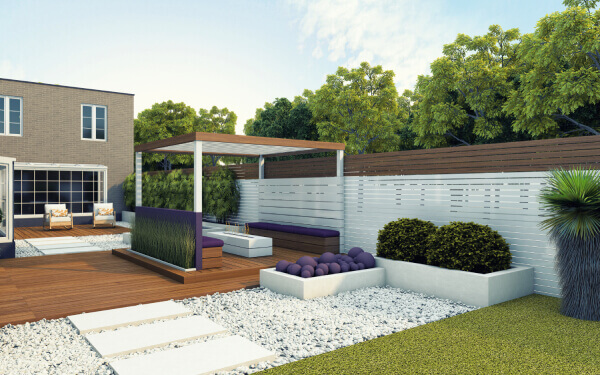
Here are 3 tips on how to create a modern garden design in backyard of any size:
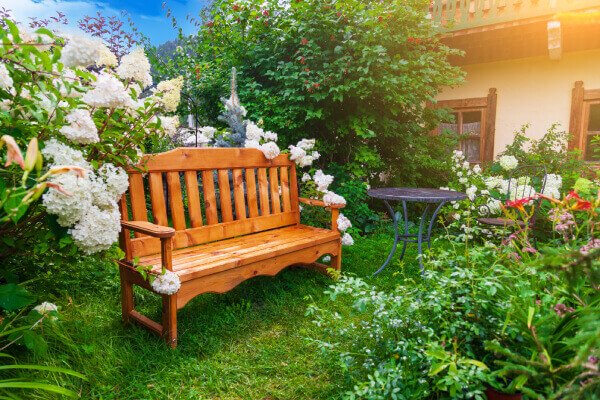
Rustic gardens are much different from Japanese or modern gardens. Rustic landscaping is full of charm and colors and there aren’t many rules to it. Also, rustic gardens are easier to maintain, they are practical and laidback.
Creating a rustic landscape design is a perfect opportunity to get creative. Also, it is a perfect time to use some of your older decorations and furniture. If you don’t have it and don’t want to spend a lot of money, go to yard sales in your neighborhood, you may find some hidden gems.
Great thing about rustic gardens is that you can use potted and planted flowers. Try to go with similar types of flowers and look for pots that have something in common, in order to avoid a chaotic looking backyard.
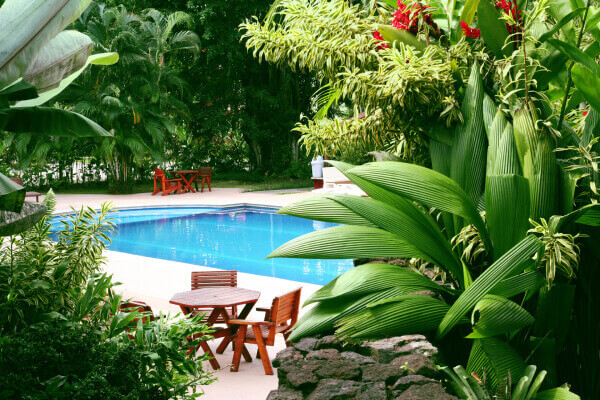
Tropical and exotic looking garden can make you feel like you are on vacation all year round. Here are some tips for creating resort-like feel:
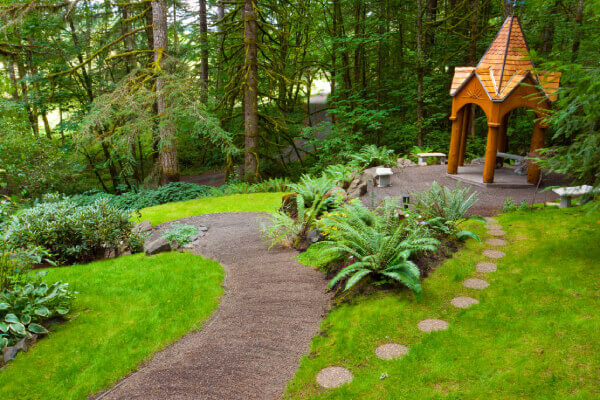
Natural or naturalized design is a great eco-friendly landscaping idea. You can create it in your garden easily. Here are 3 main elements of naturalized gardens:
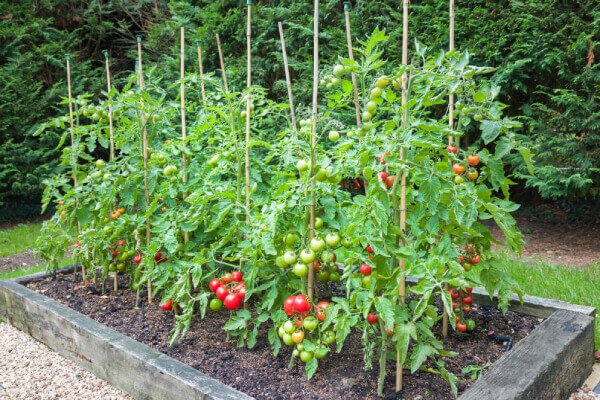
Another environmentally friendly garden type is organic garden. And you are not just helping the environment, you are saving money on groceries and living a healthier lifestyle. When people think of organic gardens, the first thing that pops to mind is vegetables, but you can also have organic flowers. Organic just means that there are no chemicals involved in cultivating.
You can incorporate organic gardens in every type of landscape design. You should just use organic means of fertilizing the soil and natural methods of bug control. The best way of fertilizing the soil organically is to have a compost bin.
1. Unity – It is very important to create a cohesive and harmonious landscape design.
2. Simplicity – Obviously you don’t want to overload your garden.
3. Balance – You can create it with a symmetrical or asymmetrical design. This will determine if you will have a formal or more casual backyard.
4. Texture – You need to know the colors and textures of your plants to have a beautiful garden design all year round.
5. Proportion/Scale – The size of each element of the landscaping design will hugely impact the final result.
6. Focal point – Accentuating one or a few main elements will create a cohesive landscape design.
7. Variety – Contrast and variety will create a well-rounded design.
Landscape architecture is of great importance for various reasons. It counteracts environmental toxicity by integrating plants that fight pollutants and toxins. Through stormwater management, weather control and innovative design, landscape architecture promotes urban well-being, mental health and a harmonious relationship with nature, creating a therapeutic and rejuvenating environment.
1. Analize the site
2. Decide on the theme and the atmosphere
3. Create sketches of your ideas
4. Once you have chosen one idea, create a final design plan
As you saw, this type of planning and making a perfect design consists of several steps. Also, if you want to incorporate additional structures in your design you will probably need one or more permits.
Our site plans for permits will help you with both of these things. You will be able to create an ideal layout because you will have a site plan with the dimensions and locations of all existing structures on your lot. You will also be able to apply for necessary permits because there will be proposed structures on it as well. So you can start with construction as soon as possible. If you have any additional questions, contact us.
Learn more about our contributor:

Contributing Writer | Architecture & Design Writer
During my career, I’ve written articles on interior design, home remodeling, and renovation with an emphasis on money-saving tips and DIY ideas. It’s been a rewarding journey and I am thrilled to continue helping others bring their architectural visions to life.

Building a deck is a great way to transform your outdoor space into a more appealing and functional area for relaxation and entertainment. To ensure the deck’s safety and durability,

Are you looking to modernize your pool with an outdated design and want to improve its functionality? If so, you’re in the right place. Imagine transforming your basic swimming pool

Before embarking on any commercial building project, preparing a feasibility-focused and environmentally compliant commercial site plan is a crucial first step. To facilitate success, it’s essential to evaluate every component